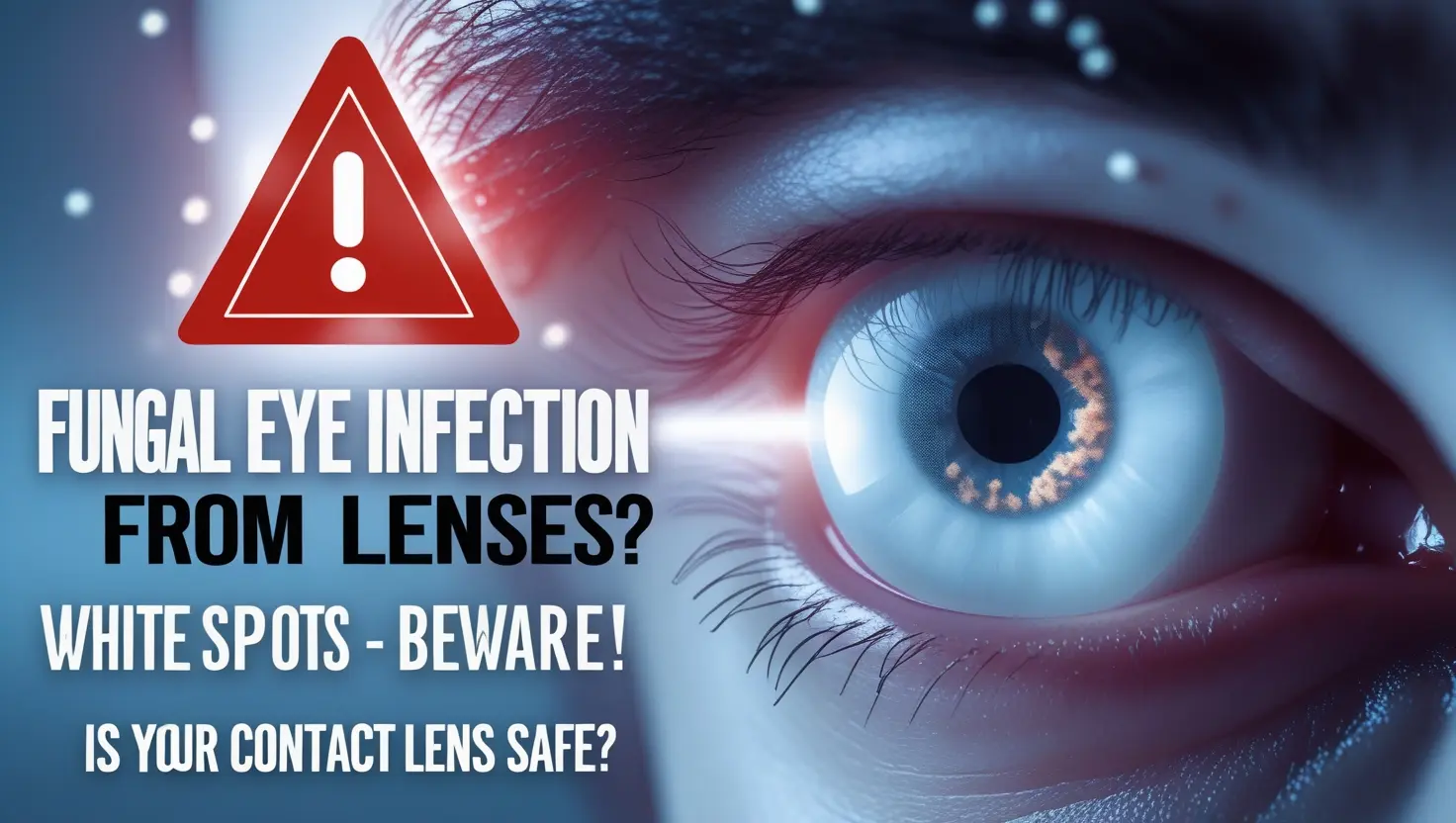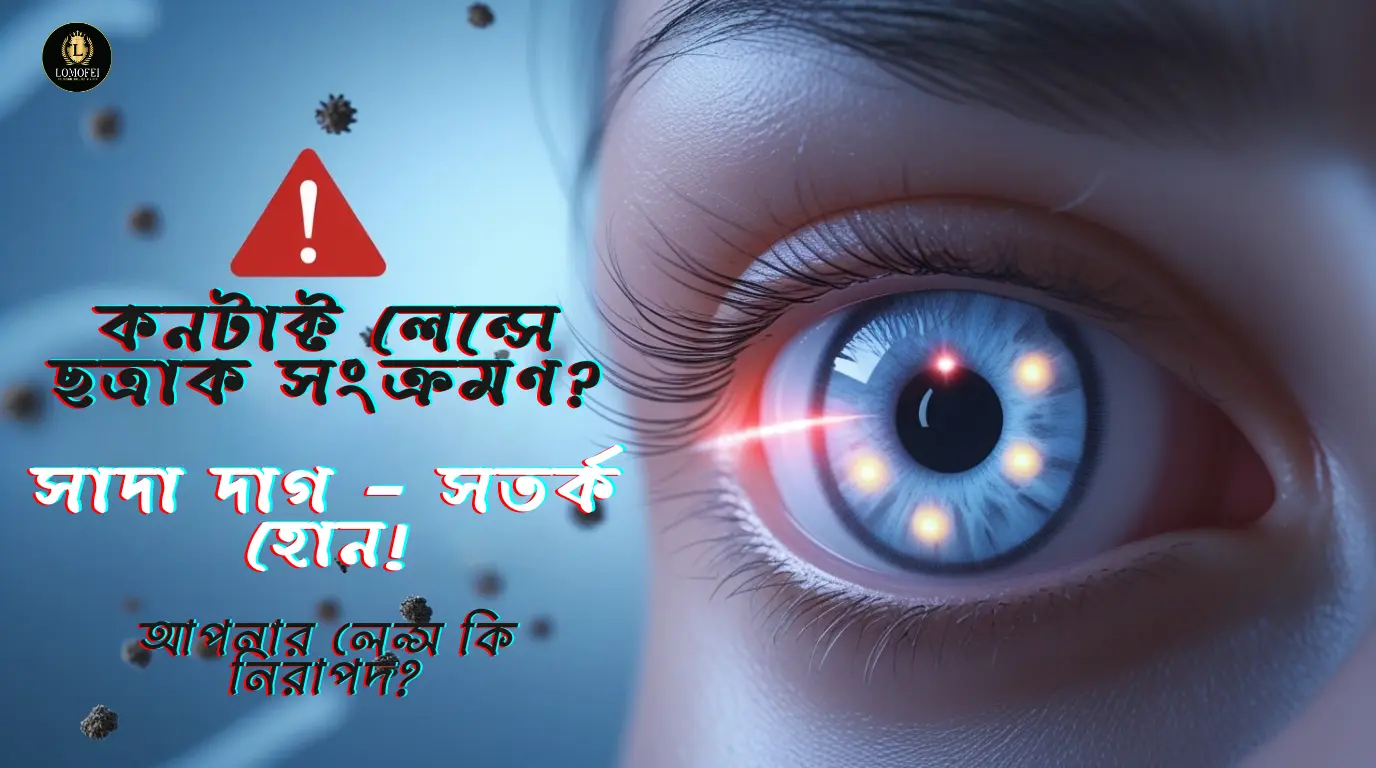The Shocking Truth About Fungal Eye Infections!
Causes, Prevention, and Solutions for Fungal Eye Infections from Contact Lenses
Seeing white spots on your lenses? It could be much worse than you think.
No, not everything is as it seems. In some situations, stains might indicate contact lens fungal contamination, a highly dangerous condition that may result in an eye infection that might blur vision and, in the worst of cases, lead to blindness.
In this manual, we will discuss,
- How fungi develop on contact lenses,
- The distinction between protein buildup and fungal infections,
- Steps for preventing lens-associated infections,
- When to visit an ophthalmologist.
Let's focus on protecting the patient's vision and improving lens hygiene. Read more: [contact lens hygiene tips]
So, What Causes Fungal Contamination in Contact Lenses?
Because fungi flourish in warm, moist places, lenses that are improperly stored are an ideal breeding ground for them. Poor hygiene around contact lenses, dirty water, or unsanitary lens containers can contaminate your eyes with dangerous microbes.
Main Reasons For Eye Fungal Infections To Occur
Fungi are more likely to inhabit an area when:
- Nonsterile solutions are used to wash contact lenses.
- The contact lens case is not hygienically maintained.
- Soft contact lenses are overused.
- Mixed solutions are expired, and multipurpose ones are misused.
- Contacts are kept in broken or worn-out storage cases.
All these factors increase the risk of fungal keratitis, which is very painful and can lead to sight loss.
What Is Fungal Keratitis
Some active living, from Fusarium to Aspergillus and Acanthamoeba, causes fungal keratitis, a type of microbial keratitis. This is caused by already infected contact lenses and cuts on the body.
Indicators For Fungal Keratitis To Exist
- Painless red irritation in the eyes.
- Discharge or tears.
- High sensitivity to light.
- No clear vision.
- White or grey hue spots on the cornea.
To those afflicted with it, the condition is complex to manage, requiring the sufferer to seek professional help from a knowledgeable ophthalmologist. In certain instances, a new cornea will be needed.
Read more: [signs of eye infections]
Differentiating Between Fungal Growth And Protein Buildup
Most stains on eye lenses are falsely categorized as fungus. Sometimes, they are just the lipids containing proteins within the eye's tissues.
Highlighted Changes
🦠 Fungal Contamination
- Appearance: White/grey patches
- Symptoms: Discomfort, pain, vision problems
- Cause: Negligent personal hygiene and lens solution or case contamination
- Action: Discontinue wearing lenses, consult with an eye doctor without delay
💧Buildup of Proteins
- Appearance: White/yellow foggy stains
- Symptoms: Rarely any
- Cause: Deposition of substances in the fluids of the eyes
- Action: Safely clean and reuse
Can You Wear Contact Lenses with Fungal Growth?
No. It is prohibited to use lenses suspected of being contaminated by a fungus.
Fungal eye infections have the potential to develop rapidly and might cause:
- Intense pain in the eye
- Ulcers or scarring in the cornea
- Loss of eyesight
- A corneal transplant may be necessary
Avoid using contact lenses and consult an eye specialist if any symptoms are being faced.
Can You Wear Lenses with Protein Buildup?
Yes, but only after proper cleaning.
Protein buildup does affect the sharpness of vision, but infection is highly unlikely. To the maximum extent possible, an accepted method of lens cleaner or protein remover should be utilized.
How to Prevent Fungal Eye Infections
Eye infections and fungal contamination can be avoided by paying attention to hygiene.
Use and Maintenance of Contact Lenses
- Use only sterile solutions made specifically for contact lenses. Do not use plain water.
- Dispose of the contact lens case as frequently as once a month or as infrequently as every three months.
- Do not sleep in lenses unless instructed to by an eye doctor.
- Do not use expired supplies such as ReNu with MoistureLoc Soft.
Each action helps mitigate the chances of getting a fungal infection from using contacts.
Instructions for Cleansing Protein Deposits
How to Eliminate Protein Residues
- Remove the lenses from the eyes and rinse them in a sterile solution.
- Please put them in an overnight soak total contact lens holder with a potion removing protein.
- Using soft finger pads, clean the lenses without strong scrubbing motions.
- Regular cleaning of the contact lens case minimizes the chances of returning to the case.
Read more: [how to clean protein from contact lenses]
When to Visit the Eye Care Provider
If you see:
- Rowing sore eyes
- Redness as well as blurred vision, together with any discharge
- Alternating white patches within the corn
These symptoms may be due to a fungal infection in the eye or keratitis. For any follow-up care, do get an ophthalmology checkup for treatment.
Read more: [when to see an ophthalmologist]
Some Final Words for Eye Infections from Contact Lens use
To best avoid keratitis and fungal infections, proper care with guidance and clear instructions yields the best results.
- Take care of hygiene when it comes to lenses
- Use only the recommended contact lens cleaning solutions.
- Refrain from wearing the contacts past the replacement schedule and replace the cases.
Your vision is delicate. So, treat your lenses well, and they will protect your eyesight.
Do you know where to go for help managing contact lenses or if you think you have an infection?
Contact an authorized ophthalmologist or go to the nearest eye hospital right away.






